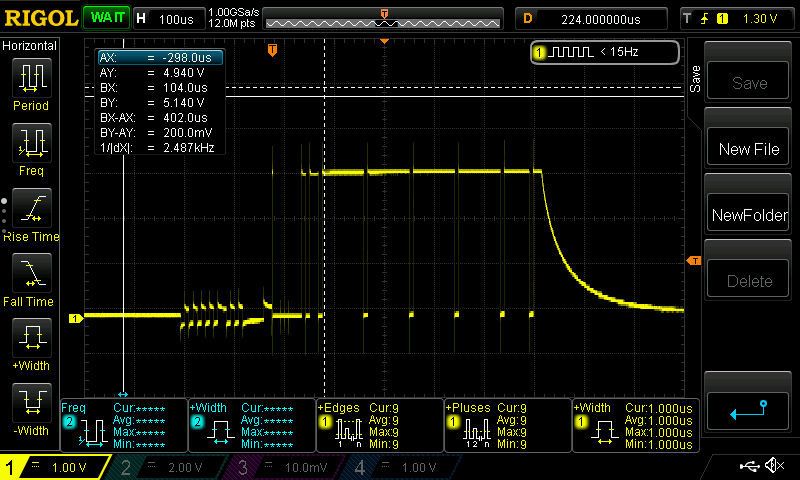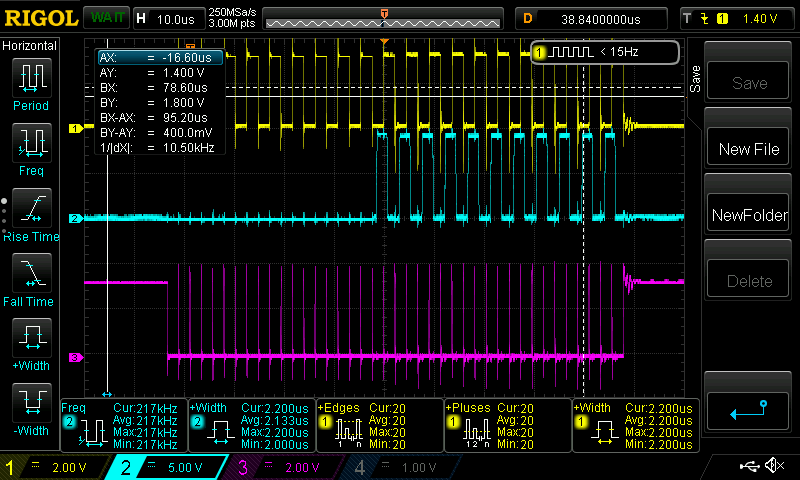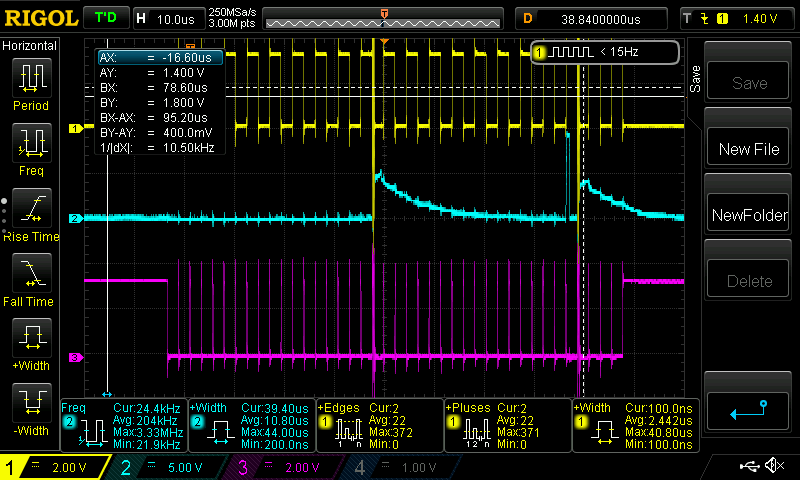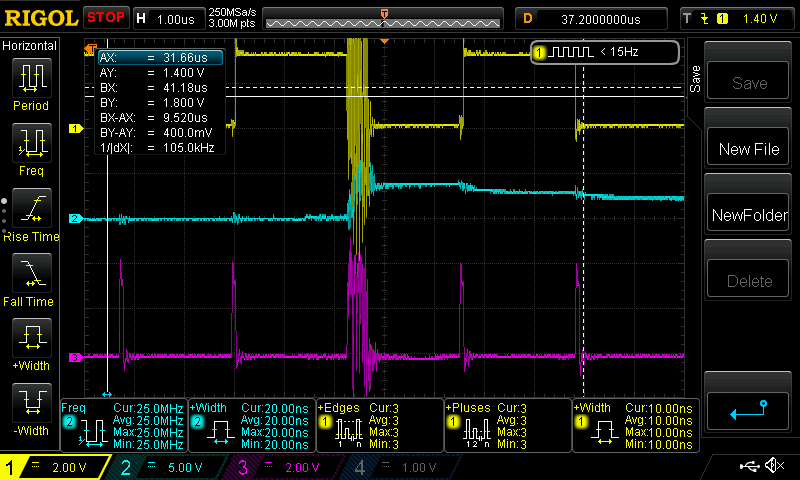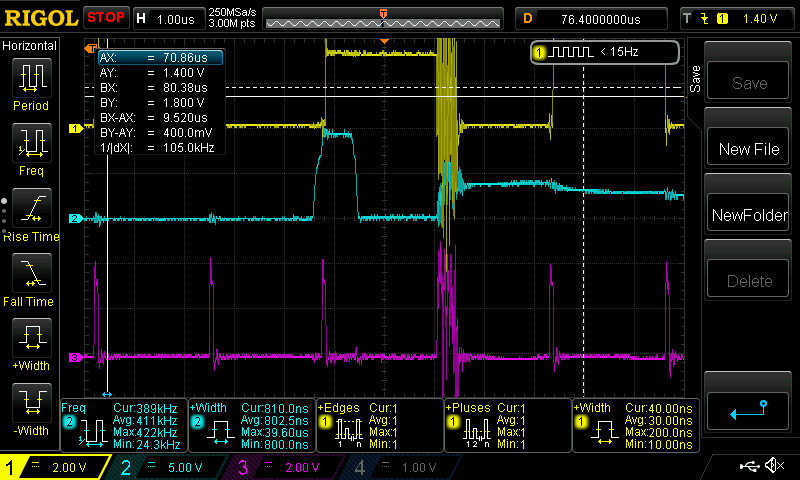Other Parts Discussed in Thread: , MSP-EXP430F5529LP, , DRV8870, DRV8816
Hello,
I would like to know what is the best method to connect the board PGA460Q1SFF-DDFB (460SFB Rev.E1) to the board BOOSTXL-PGA460.
Because i tried this method: On BOOSTXL-PGA460 EVB i did:
1) Elevate pins 10, 11 and 8 of PGA460
2) solder connectors on TP1, TP2, TP4
I connected the relative signals and I powered up the boards.
First issue was UV on VPWR, using just USB cable (VPWR went down to 5.1V, with a current consumption to the PGA460Q1SFF-DDFB of 15mA).
I solved this issue changing the PWR config, using external power supply (@7V)
Now it is possible to configure the PGA460 on PGA460Q1SFF-DDFB (with a presaved config file), but when I try to make a measurement, the system is not working.
And i see this strange waveform on TXD line...attached you can find the picture...
I would like to know if it is correct or not...
Thank you for the support. Kind regards
Alessandro


